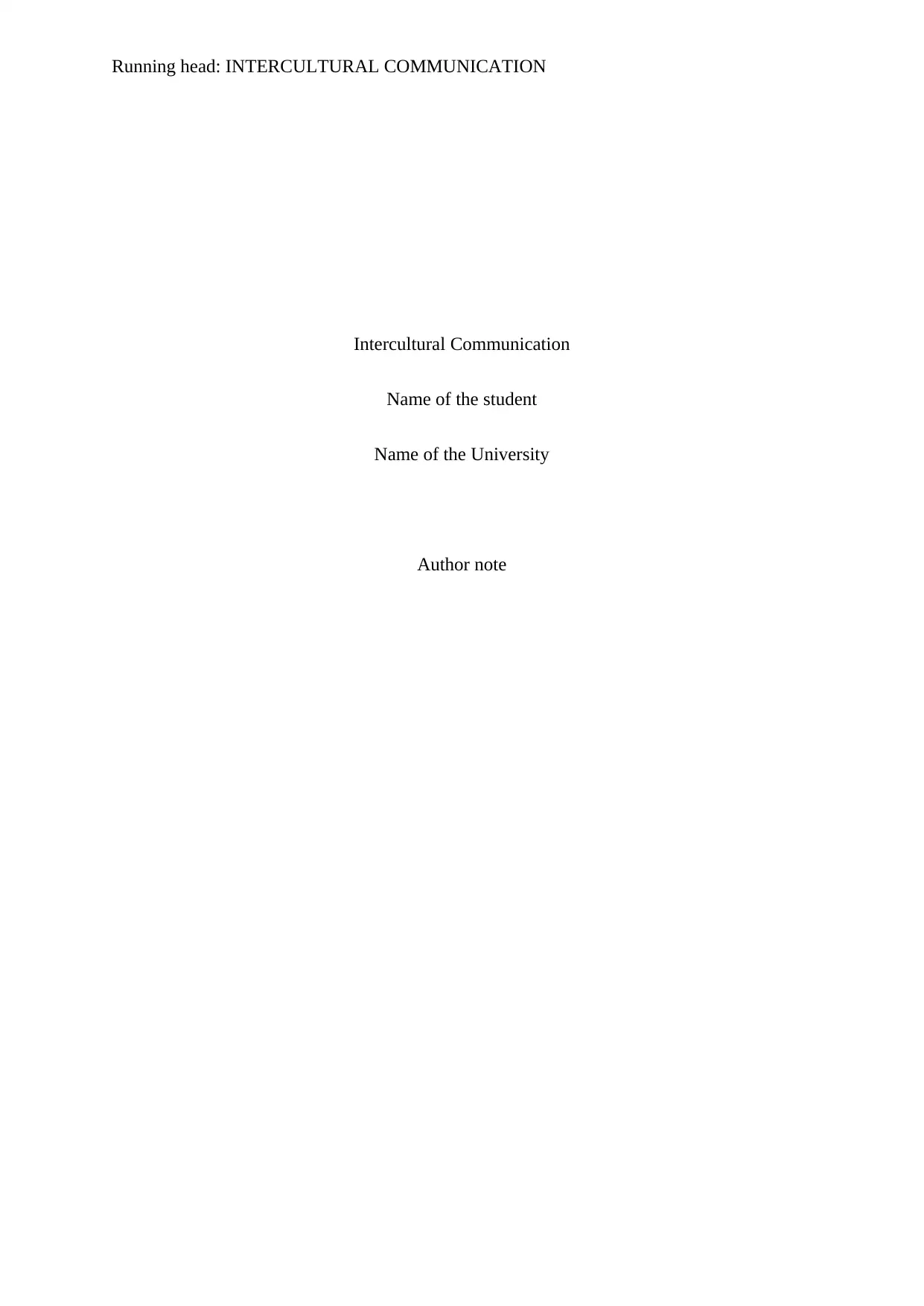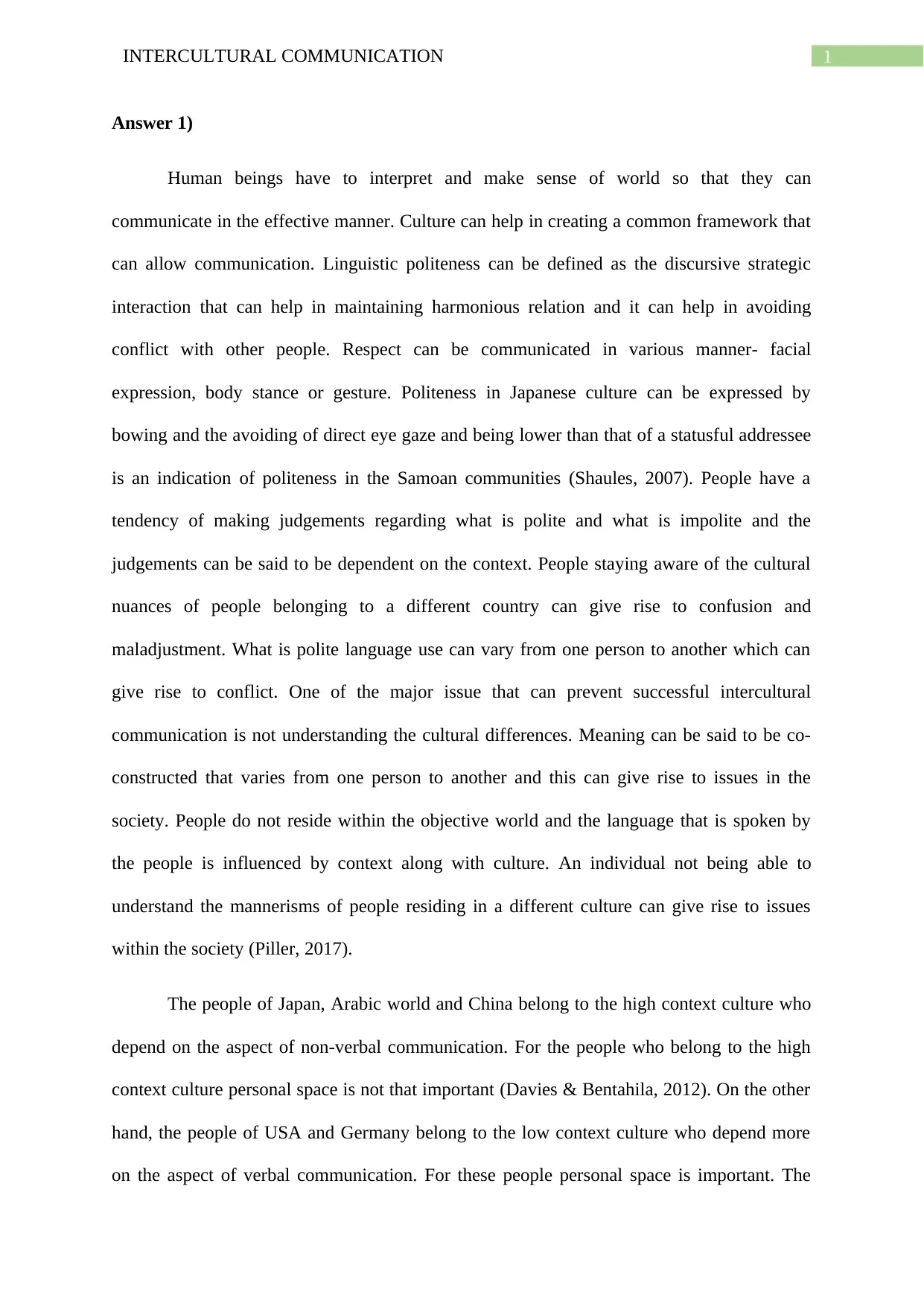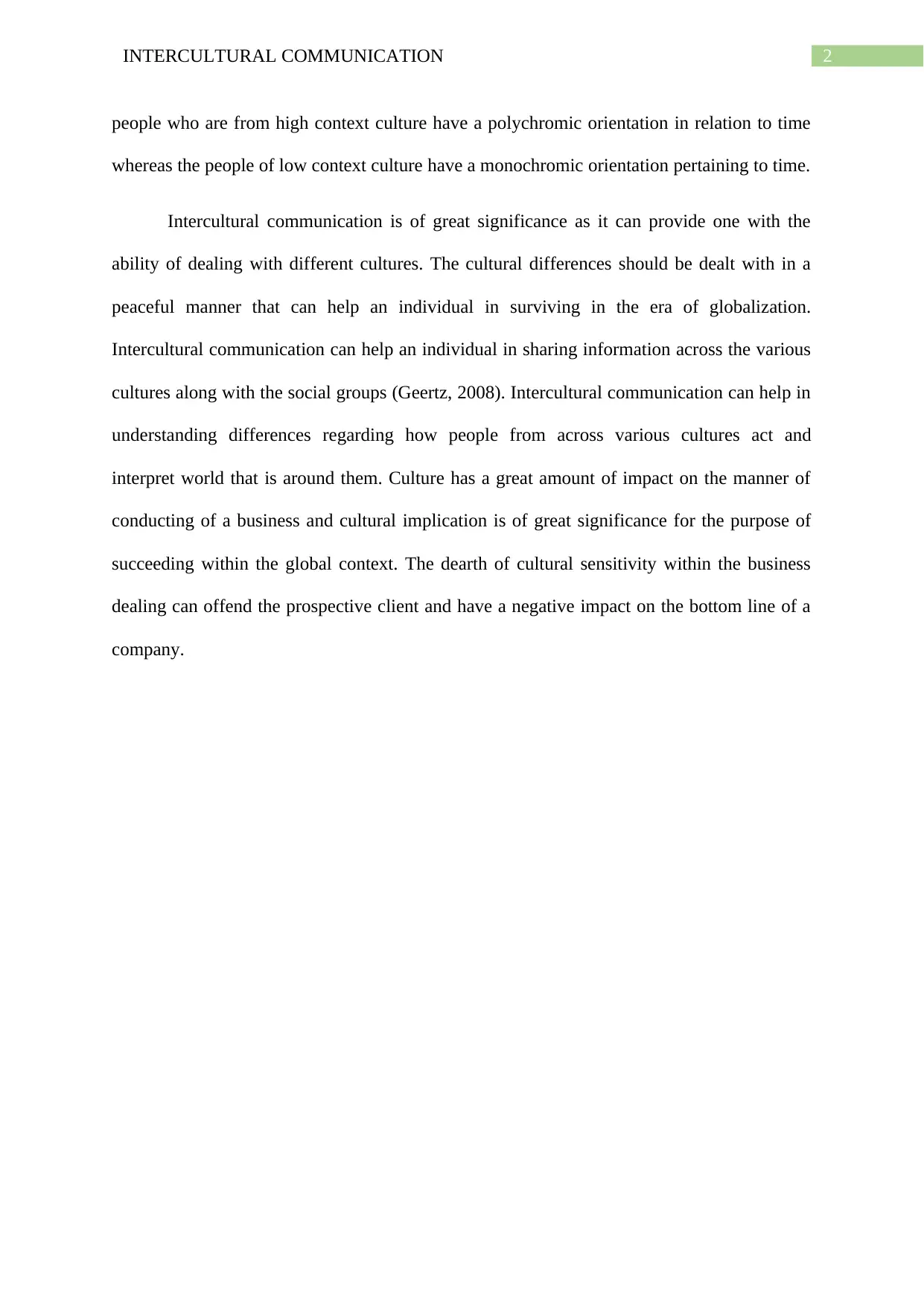Intercultural Communication: Issues and Challenges (SOCU1025)
VerifiedAdded on 2023/06/08
|4
|684
|354
Homework Assignment
AI Summary
This assignment explores the multifaceted aspects of intercultural communication, emphasizing the importance of understanding cultural nuances to foster effective communication. The paper delves into the concept of linguistic politeness and how it varies across cultures, highlighting differences in non-verbal cues, such as facial expressions, body language, and eye contact. It differentiates between high-context cultures, like those in Japan and China, which rely heavily on non-verbal communication, and low-context cultures, such as the USA and Germany, which emphasize verbal communication. The assignment addresses the significant issues that can prevent successful intercultural communication, such as a lack of understanding of cultural differences, which can lead to misunderstandings and conflict. It also underscores the impact of culture on business practices and the necessity of cultural sensitivity in a globalized world. The paper references key readings and sources to support its analysis, providing a comprehensive overview of the challenges and importance of intercultural communication.
1 out of 4











![[object Object]](/_next/static/media/star-bottom.7253800d.svg)